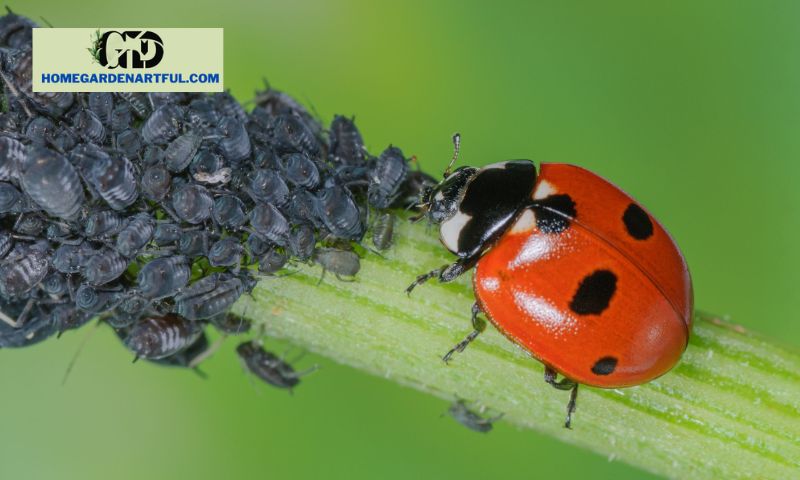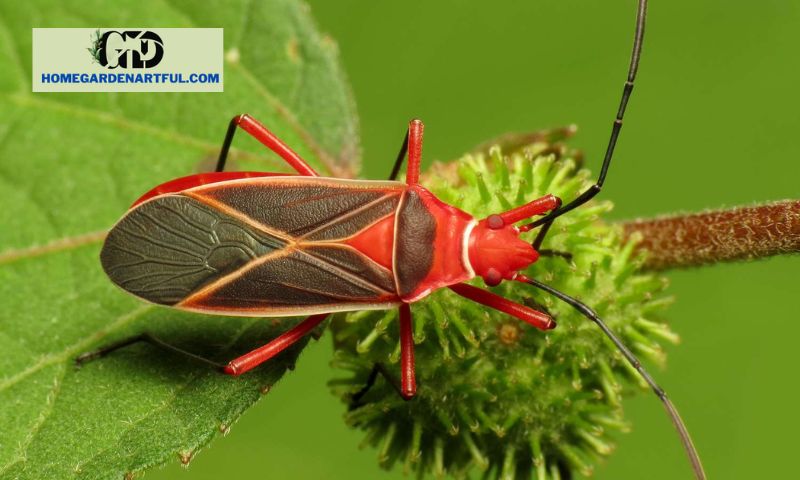Is garden pests in texas serious? Have you ever embarked on a gardening journey, pouring your heart and soul into nurturing your beloved plants, only to find them falling prey to uninvited guests? Yes, we’re talking about those pesky garden pests that can wreak havoc on your precious greens. Texas, with its diverse climate and abundant flora, is no stranger to these nuisances. But fear not! In this article, homegardenartful.com will delve into the world of garden pests in Texas and equip you with the knowledge to tackle them head-on.
A Lush Green Haven: The Significance of Gardening in Texas

From the vibrant wildflowers that carpet the countryside to the thriving vegetable patches in backyards, gardening holds a special place in the hearts of Texans. Not only does it provide a means to connect with nature, but it also offers the opportunity to cultivate a bountiful harvest and create a visually stunning landscape. However, the journey to gardening success is often hindered by the presence of garden pests.
Unwelcome Visitors: Introducing the Problem of Garden Pests in Texas
Garden pests in Texas come in various forms and sizes, each with its unique set of challenges. Aphids, those tiny but relentless sap-sucking insects, can leave your plants weakened and distorted. Whiteflies, like miniature snowflakes, can quickly multiply and cause irreversible damage to foliage. Caterpillars, with their insatiable appetite, can devour leaves overnight, leaving your plants in a sorry state. And let’s not forget about the slimy snails and slugs that leave behind a trail of destruction in their wake.
The warm and humid climate of Texas also provides a perfect breeding ground for spider mites, which can infest your plants and suck the life out of them. Additionally, squash bugs can wreak havoc on your cucumber, squash, and melon plants, leading to stunted growth and reduced yields. These pests not only pose a threat to the aesthetics of your garden but can also compromise the overall health and productivity of your plants.
But fret not! In the upcoming sections, we will explore the common garden pests in Texas, the damage caused by them, and most importantly, effective prevention and control measures. Stay tuned as we embark on a journey to reclaim your garden from these unwanted invaders.
Common Garden Pests in Texas
Unveiling the Culprits: A Look at the Most Common Garden Pests in Texas
As a Texan gardener, it is essential to familiarize yourself with the notorious pests that may invade your garden. Let’s shine a spotlight on the most common troublemakers you may encounter in the Lone Star State.
1. Aphids: Tiny but Mighty Troublemakers
Aphids, those notorious sap-sucking critters, have a knack for congregating on the tender shoots and leaves of your plants. These small, pear-shaped insects can multiply rapidly, leaving behind a sticky residue known as honeydew. Aphids can cause stunted growth, curling leaves, and even transmit plant diseases.
2. Whiteflies: Delicate yet Destructive
Don’t be fooled by their delicate appearance – whiteflies can wreak havoc on your garden. These tiny, flying insects feast on the undersides of leaves, draining plants of their vital juices. The damage caused by whiteflies includes yellowing leaves, reduced plant vigor, and the spread of viral diseases.
3. Caterpillars: Nature’s Hungry Caterers
Caterpillars may seem harmless with their soft bodies and voracious appetites, but they can swiftly turn your thriving garden into a feast. These larval stage insects can munch through leaves, leaving your plants skeletonized and vulnerable to further damage. Popular garden-dwelling caterpillars in Texas include cabbage loopers, tomato hornworms, and armyworms.
4. Snails and Slugs: Slimy Slayers of Your Garden
Snails and slugs may appear harmless, but their insatiable appetite can wreak havoc on your lush foliage. These slimy garden invaders are most active during moist conditions, often leaving behind a trail of destruction as they chomp through leaves, stems, and fruits. Their feeding habits can lead to unsightly holes and damaged plants.
5. Spider Mites: Tiny Terrors of the Plant World
Spider mites, though minuscule, can cause significant damage to your plants. These tiny arachnids feed on plant sap, leading to yellowing leaves, stippling, and webbing. In the hot and dry climate of Texas, spider mites thrive and can quickly infest your garden, posing a threat to a wide range of plants.
6. Squash Bugs: The Bane of Cucurbit Lovers
If you’re growing cucumbers, squash, or melons, beware of the dreaded squash bugs. These shield-shaped insects can wreak havoc on your beloved plants, sucking sap and injecting toxic saliva that leads to wilting and plant decline. Early detection and control are crucial to prevent severe damage.
Now that we’ve acquainted ourselves with the most common garden pests in Texas, it’s time to explore the detrimental effects they can have on your garden. Stay tuned as we delve into the damage caused by these pesky invaders and how to combat them effectively.
Damage Caused by Garden Pests

Garden pests in Texas may seem like mere nuisances, but their impact on your beloved plants can be far-reaching and devastating. Understanding the potential damage caused by these pests is crucial in order to devise effective strategies for prevention and control.
Unveiling the Consequences: Potential Damage Caused by Garden Pests
- Harm to plant leaves, stems, and roots: Garden pests have an insatiable appetite, and their feasting frenzy often targets the very life source of your plants. They can chew through leaves, leaving behind unsightly holes and skeletonized foliage. Pests like caterpillars can even devour entire leaves, leaving your plants stripped bare. Furthermore, they may tunnel into stems, weakening the structural integrity of your plants. In some cases, pests can also attack plant roots, leading to diminished nutrient absorption and stunted growth.
- Impact on plant growth and productivity: Pests can significantly impede the growth and productivity of your garden. As they feed on plant tissues, they deprive your plants of vital nutrients and energy. This can result in stunted growth, reduced vigor, and even premature death. Additionally, pests can hamper the reproductive process, leading to decreased fruit or flower production. Imagine putting in all that effort to nurture your plants, only to see them struggle to thrive due to the relentless assault of garden pests.
- Risk of transmitting diseases: It’s not just the physical damage caused by pests that you should be concerned about. Some garden pests, such as aphids, whiteflies, and certain beetles, can act as vectors for plant diseases. They can transfer harmful pathogens from plant to plant, spreading infections and compromising the health of your entire garden. This can result in wilting, discoloration, and even death of your beloved plants.
The consequences of garden pests in Texas are not to be underestimated. Their presence can lead to a cascade of detrimental effects, impacting the aesthetics, growth, and overall health of your garden. But fear not, as we will explore effective prevention and control measures in the upcoming sections, empowering you to safeguard your plants and ensure their flourishing vitality. Stay tuned for valuable insights on combating these garden pests!
Prevention and Control Measures
A. Minimizing Garden Pest Infestation: An Overview of Preventive Measures
When it comes to combating garden pests in Texas, prevention is key. By taking proactive measures, you can minimize the chances of a full-blown infestation and keep your plants thriving. Let’s explore some effective preventive strategies:
1. Proper Plant Selection and Placement
Choosing the right plants for your garden can make a world of difference in deterring pests. Opt for native species and varieties known for their resistance to common garden pests in Texas. Additionally, consider the specific requirements of each plant, such as sunlight, soil type, and moisture levels, to ensure they are placed in their ideal growing conditions. Healthy and vigorous plants are more resilient to pest attacks.
2. Regular Maintenance and Cleanliness
Maintaining a clean and tidy garden environment is crucial in preventing pest infestations. Remove debris, fallen leaves, and weeds regularly, as they provide hiding places and breeding grounds for pests. Prune damaged or overcrowded branches to improve air circulation and minimize the risk of fungal infections. Regularly inspect your plants for signs of pest activity, such as chewed leaves or discolored foliage, and take immediate action to address any issues.
3. Natural Pest Predators
Harnessing the power of nature’s pest control agents can be an effective and environmentally friendly approach. Encourage beneficial insects, such as ladybugs, lacewings, and praying mantises, to take up residence in your garden. These natural predators feed on common garden pests, keeping their populations in check. Consider planting companion plants that attract beneficial insects or create habitats like bee houses to promote biodiversity.
B. Exploring Control Methods: Organic, Cultural, and Biological Options
While prevention is the first line of defense, sometimes pests still manage to infiltrate your garden. In such cases, it’s important to have a range of control methods at your disposal. Let’s take a closer look at some effective options for managing garden pests in Texas.
1. Organic and Chemical-Free Solutions
For those seeking environmentally friendly alternatives, organic pest control methods offer effective solutions. Neem oil, derived from the neem tree, acts as a natural insecticide and repellant. Homemade sprays made from ingredients like garlic, chili peppers, or soap can also help deter pests. Beneficial nematodes, microscopic worms that target pest larvae, can be applied to the soil to combat underground pests. These methods reduce the use of harmful chemicals, safeguarding the overall health of your garden.
2. Cultural Control Methods
Cultural control methods involve modifying your gardening practices to discourage pest activity. Implementing crop rotation, for instance, helps disrupt pest life cycles and reduce their populations. Creating physical barriers like row covers can prevent pests from reaching your plants. Mulching with organic materials not only conserves moisture but also acts as a deterrent to certain pests. By adopting these cultural practices, you can create an inhospitable environment for garden pests.
3. Biological Control Options
Biological control involves using natural enemies to combat garden pests. Introducing beneficial insects, such as ladybugs or parasitic wasps, can help control aphids and caterpillars. Nematodes, microscopic worms that attack specific pests, can be applied to the soil. Bacillus thuringiensis (Bt), a naturally occurring bacteria, targets specific caterpillars and is available in spray form. These biological control options provide long-term solutions while minimizing the use of chemicals.
By incorporating these preventive measures and deploying effective control methods, you can protect your garden from the relentless onslaught of pests. Join me in the next section as we explore practical tips specifically tailored for Texas gardeners to manage garden pests throughout the seasons.
Garden Pest Management Tips for Texas Gardeners
Seasonal Considerations: Navigating Pest Management in Texas
As a Texas gardener, it’s crucial to understand the seasonal patterns and how they influence pest activity. Different pests thrive in various weather conditions, so staying one step ahead requires a keen eye and a proactive approach. During the warm and wet spring months, aphids and caterpillars tend to be more prevalent. As the scorching summer arrives, whiteflies and spider mites become more active. When the cooler temperatures of fall set in, watch out for squash bugs and snails. By being aware of these seasonal fluctuations, you can tailor your pest management strategies accordingly.
Identifying and Monitoring: The Power of Vigilance
Detecting garden pests early on is the key to effective pest management. Regularly inspect your plants, paying close attention to the undersides of leaves, stems, and the soil around your garden beds. Look out for signs like wilting, discoloration, chewed leaves, or the presence of eggs and larvae. Additionally, consider implementing traps, sticky tapes, or pheromone-based traps to monitor pest populations. By staying vigilant and promptly identifying potential threats, you can take swift action to prevent infestations from spiraling out of control.
Recommended Pest Control Products and Techniques
When it comes to controlling garden pests in Texas, you have a range of options at your disposal. For those who prefer organic and chemical-free solutions, consider using insecticidal soaps or neem oil, which are effective against aphids, caterpillars, and whiteflies. Cultural control methods, such as practicing crop rotation, companion planting, and maintaining proper sanitation, can also help deter pests. Embracing biological control options, such as introducing beneficial insects like ladybugs or nematodes, can naturally keep pest populations in check.
However, in severe cases, chemical pesticides may be necessary. If opting for this route, ensure you select products specifically formulated for the pests you are targeting, following all application instructions diligently. It’s crucial to strike a balance between effective pest control and minimizing harm to beneficial insects and the environment.
Remember, garden pest management is an ongoing process that requires dedication and adaptability. By understanding the seasonal considerations, diligently monitoring your plants, and employing suitable pest control methods, you can create a thriving garden oasis that stands strong against the persistent onslaught of garden pests in the Lone Star State.


